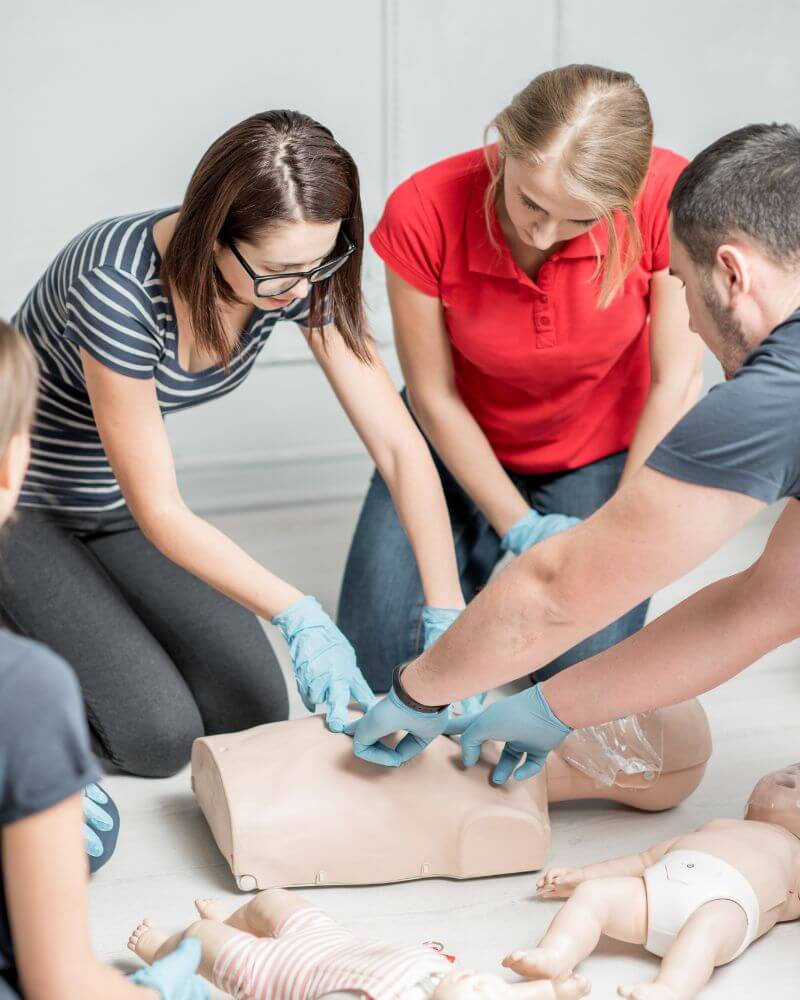Introduction
In today's busy work environment, safety is extremely important. Organizations are increasingly identifying the importance of developing a risk-free space for employees. One of one of the most essential parts of work environment safety training is first aid and mouth-to-mouth resuscitation (Cardiopulmonary Resuscitation) courses. These training courses not just empower employees with vital life-saving abilities but likewise foster a society of security within the organization. In this write-up, we will delve into the myriad reasons work environment safety and security training ought to consist of emergency treatment and CPR programs, emphasizing their value in improving office safety.
Why Work environment Safety and security Training Ought To Consist Of Emergency Treatment and CPR Courses
The integration of emergency treatment and CPR training courses right into office safety and security training has significant benefits. They gear up workers with the understanding and abilities necessary to respond properly to medical emergency situations, lower recuperation time for damaged people, and potentially save lives. Moreover, having educated employees on-site can instill self-confidence amongst employees and guarantee them that their well-being is prioritized.


Understanding Initial Aid
First aid refers to the instant treatment given to a specific suffering from a small or severe health problem or injury until professional medical assistance shows up. Comprehending fundamental first aid concepts can make a considerable distinction in emergency situation situations.
Key Elements of First Aid
Assessment: The ability to examine a scenario promptly can assist identify the appropriate actions needed. Stabilization: Understanding how to stabilize an injured person avoids additional harm. Communication: Properly interacting with emergency situation solutions is crucial for timely assistance.The Value of CPR
CPR is a life-saving method utilized in emergencies when a person's heartbeat or breathing has quit. It involves chest compressions and rescue breaths to maintain blood flow and oxygenation until specialist help arrives.

How mouth-to-mouth resuscitation Works
- Chest Compressions: These assist flow blood throughout the body. Rescue Breaths: These give oxygen to the lungs.
Benefits of First Aid and Mouth-to-mouth Resuscitation Certification
Obtaining an emergency treatment certification or finishing mouth-to-mouth resuscitation programs features countless advantages, both for people and organizations.
Enhanced Worker Confidence: Workers really feel extra secure knowing they have life-saving skills. Reduced Recovery Time: Quick action through first aid can result in much better outcomes for damaged individuals. Compliance with Regulations: Several sectors require qualified employees as component of their health and safety regulations.Creating a Society of Security Via Training
Implementing emergency treatment and mouth-to-mouth resuscitation training promotes a society that focuses on employee health.
Encouraging Teamwork
Training sessions commonly entail team-building exercises that enhance cooperation amongst employees.
Building Trust fund In between Workers and Management
When monitoring buys worker training, it reveals commitment to their health and wellness, leading to increased morale.
First Help Flows vs. CPR Courses: What's the Difference?
While both sorts of courses are vital, they focus on various skill sets.
First Help Courses
These programs cover a vast array of topics past simply cardiac emergency situations, including:
- Wound care Burns Choking
CPR Courses
CPR courses specifically focus on methods connected to heart attack situations, highlighting:
- Adult CPR Child/ baby resuscitation Use of an Automated External Defibrillator (AED)
Choosing the Right Training Provider
Not all training service providers are created equivalent; consequently, choosing one that fulfills your company's needs is critical.
Accreditation Matters
Ensure that your picked carrier offers certified programs identified by relevant authorities.
Instructor Experience
Consider teachers' qualifications; knowledgeable instructors frequently provide richer learning experiences with real-world examples.
Incorporating Emergency treatment into Office Safety Policies
Organizations ought to incorporate first aid needs into their wider security policies for comprehensive coverage.
Regular Training Updates
Conducting normal refresher courses ensures that knowledge stays present among employees.
Creating Emergency Action Plans
Having clear plans in place can guide qualified employees during emergencies.
Legal Ramifications of First Aid Training in the Workplace
Employers have legal obligations pertaining to workplace safety and security; implementing emergency treatment training can assist minimize risks related to non-compliance.
Negligence Claims
Failure to provide adequate training might leave companies susceptible to claims if an occurrence occurs because of absence of preparedness.
FAQ Section
What is included in a common emergency treatment course?- A common emergency treatment course includes guideline on examining injuries, dealing with wounds, managing burns, managing choking cases, and doing CPR if necessary.
- Most mouth-to-mouth resuscitation training courses last between 4-- 6 hours depending on whether it's basic or innovative training.
- While not constantly legitimately mandated, having actually licensed staff members can significantly enhance office safety standards.
- Many approved organizations supply online renewal options for first aid certifications which include assessments via video conferencing.
- Yes, markets such as construction, medical care, education and learning, and manufacturing often have governing requirements necessitating experienced employees on site.
- It's advised that workers take part in correspondence course every 2 years or faster if there are substantial changes in treatments or regulations.
Conclusion
To summarize, integrating emergency treatment and CPR right into workplace safety training is not merely an alternative yet a need in today's work environments where emergencies can occur anytime. Organizations benefit greatly from having trained personnel all set to respond efficiently throughout dilemmas while cultivating an ambience where staff member health takes precedence over all else. Therefore, it comes to be obvious why workplace safety training should consist of first aid and mouth-to-mouth resuscitation training courses-- they save lives while advertising a positive method towards health and wellness criteria within organizations throughout numerous sectors.
By focusing on such necessary training campaigns-- emergency treatment certificates obtained through reliable providers together with practical hands-on experience-- firms can significantly improve their overall emergency preparedness degrees while additionally constructing stronger groups with the ability of taking on any kind of circumstance head-on!